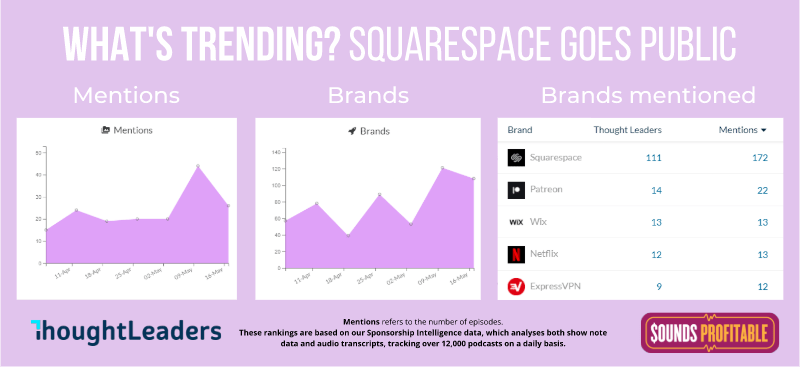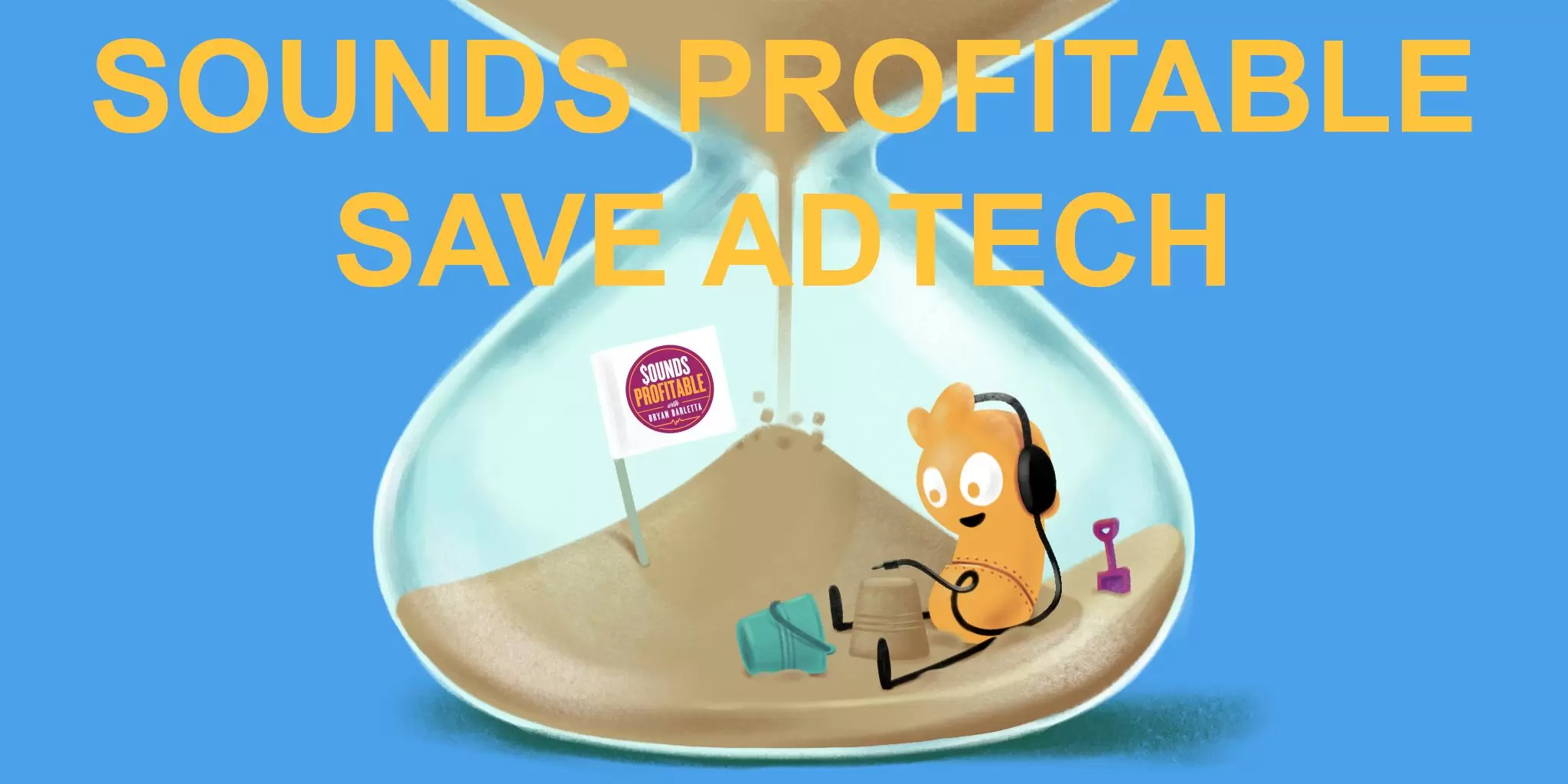Cameron Hendrix and John Goforth of Magellan AI join me on the Sounds Profitable Podcast to expand on The Podscape!
Over 200 people have checked out Up Next - A Podcast Format Up Front, and you should too!
Introduction
VAST is an acronym that gets thrown around a lot, especially as more and more podcast hosting platforms are supporting dynamic ad insertions.
VAST stands for Video Ad Serving Template, which seems like an odd piece of technology to talk about in a podcast adtech newsletter. But sometime back in 2018, there was the Digital Audio Ad Serving Template, or DAAST. VAST and DAAST had a lot of overlap in how the technology worked, so in the effort of mass adoption, VAST v4.1 released in November 2018 decided to roll DAAST into the VAST protocol… but they didn’t think to change the name.
At a high level, VAST is a way to allow one ad server to call another ad server. It can be used in place of individual ad audio files for a campaign or alternatively as a way to connect with external ad buyers, including programmatic platforms.
What’s attractive about VAST in podcasting is that this is a bigger-than-podcasting adtech standard that spans across multiple channels. Normalizing how technology works leads to scale, especially as we enable podcasting to be part of a larger multi-channel buy and not just a silo that buyers experiment with.
VAST absolutely does work in podcasting with a few minor tweaks to line up the differences between streaming and downloaded content, which means things can only continue to improve. So today we’re going to better detail how it works, the best ways to use it, and understand the value that VAST brings today and will continue to bring as the greater adtech industry actually collaborates with us.
It’s a VAST Job
Calling a VAST URL in podcasting means the primary ad server (the hosting platform for the podcast) calls another a secondary ad server to ask if they have an ad available to stitch into the episode.
So instead of uploading an audio file of the ad read to your podcast hosting platform when you build out your campaign, you instead include a VAST URL that calls another ad server where the audio file for the ad lives.
In the same way your hosting platform had a chance to say “hey, this is the right campaign for this listener”, the VAST URL gives the external ad server the chance to double check that yes, the listener actually is in Texas, before responding back with the ad they want your ad server to dynamically insert.
A VAST URL is interchangeable with a creative unit—an ad—inside of a campaign.
Instead of uploading the ad audio file, you provide a VAST URL. When the creative would be served under the targeting of the campaign,the ad server calls the VAST URL to fetch the ad to be served to the listener.
The big thing to remember is that every ad server has a different value proposition on how it handles data processing and targeting. Think of how Megaphone promotes their Nielsen segment targeting or how AdsWizz advocates for their contextual targeting. Most ad servers are going to agree on fundamental points such as geolocation or what the device is that is making the request, because of how well that data is standardized
But when it comes to unique targeting, it’s definitely possible for them not to align.
The primary ad server determines if the initial campaign is eligible to be inserted into the episode while the VAST ad server gets to decide if it wants to return an ad back to that listener or what specific ad to return back.
And that level of creative control doesn’t just stop at being able to decide what ad to send back, it also can be used to build the ad. When we dove into how dynamic ad insertion works previously, I used A Million Ads to show off the technology. That example I created effectively builds a Mad Libs ad based on when you listened to it, the device and app you used, your location, and so many other factors; and simply lives on the A Million Ads server, waiting for the VAST URL to be called by Whooshkaa to be inserted into my podcast. This is a very very specific use that just reinforces the value of the technology which can be summed up as “one ad server calling another ad server for an ad”.
So when the VAST tag responds back with the audio ad, everything flows as smoothly as if the audio file was directly loaded into your hosting platform. And if the second ad server has no ad to serve? That’s just as smooth, because your hosting platform knows to exclude that campaign if there’s no audio file to stitch into the episode.
Using VAST provides the opportunity for an external ad server to fill an ad spot, with no detriment to your other campaigns or your listeners’ experience.
Setting Up VAST
There are a few different ways to set up VAST.
The first can be campaign-focused. I’m a brand looking for control over my entire campaign. I provide one unique VAST URL to each publisher I’m working with. Each publisher configures the campaign in the same way as if they were uploading the audio file directly into their platform. But there’s no audio for them to upload. Just the VAST URL to call. This gives the brand full control, preventing overdelivery, controlling pacing of ad delivery, or even prioritizing impressions for publishers that are performing best.
Another way is to use VAST to connect a publisher to programmatic marketplaces. It’s the primary gateway most hosting providers use today to connect to programmatic marketplaces. While some hosting companies have their own programmatic solutions when all pieces are owned in house (think Omny Studio to Triton Digital or Simplecast to AdsWizz), if you wanted to make your Megaphone inventory available on AdsWizz’s Podwave Marketplace, you’d need to use a VAST URL to accomplish that.
What I specifically like about VAST is that it can easily be used for the creation of private marketplaces and other unique configurations. Instead of just connecting my inventory through VAST into an open marketplace, I can also accept unique VAST tags from any partner that provides them (whose terms I find agreeable) to list my inventory in their marketplace as well. Imagine using VAST to specifically send all of your Canadian inventory over to TPX, or your French inventory to Audion by setting them up in campaigns that only call those VAST tags when the listener is from that specific country.
We’re not going to dive any deeper into programmatic here, but I did explain a bit more about it last year, which you definitely should check out.
Campaign Management
We’ve laid out the benefit for the publisher above and it’s pretty clear: more formats mean more revenue opportunities. But what about the brand and agency side?
Picture you’re BetterHelp.com and you’re running an announcer-read ad campaign across 50 publishers with a unique impression count per publisher. Instead of working off of spreadsheets and emails to manage audio ads and third-party tracking pixels as well, you could just provide each publisher with one VAST URL.
Now when you want to confirm all the publishers are serving the ad, you not only see the impression numbers recorded in your VAST platform and third party tracking platform, you actually know the right audio ad is being stitched into the download.
It also allows you to switch out or rotate the creative without sending the new audio ad to those 50 publishers and waiting for the airchecks to confirm that they all actually updated the correct audio file. It just provides another level of control.
Brands and agencies looking to build out their campaigns with VAST URLs will want to check out Whooshkaa, Triton Digital, and AdsWizz as they’re the three podcast focused platforms that can provide that service. There are definitely other adtech offerings out there that aren’t podcast-focused that absolutely will work on platforms that support VAST URLs, but these are the ones I know directly.
Whooshka, Omny Studio, Megaphone and Art 19, are the four hosting platforms today that have improved on their dynamic ad insertion capabilities to accept VAST URLs. VAST being a creative type that only works through dynamic ad insertion ultimately means that fewer hosting platforms support it, but that list continues to grow as more platforms adopt DAI and even more look to differentiate their offering from those adopting ad serving technology.
Wrapping It Up
Outside of podcasting, VAST and programmatic aren’t tied together at the hip like this. VAST is just a creative format, not the primary pipeline to a programmatic solution. So, for most buyers in podcasting, if they wanted to limit a campaign to just running through VAST, they’d find more success and less headaches in buying solely through a programmatic platform.
But the benefits of VAST are absolutely there.
Publishers benefit because the more formats they can accept, the less ad dollars they have to turn down. It reduces the load and responsibility on their adops team related to creative rotation and making sure the proper tracking is set. Publishers finding success with partners buying their inventory through programmatic exchanges can use VAST to prioritize private marketplaces with those buyers at a higher priority to their openly available inventory at a more favorable CPM.
With VAST, networks no longer have to require their publishers to all be part of the same hosting platform. They can work with any show that uses a hosting platform with VAST support, allowing the networks adops team to only have to operate out of one portal and reduce the need to handle every campaign for every publisher with an insertion order.
VAST allows agencies and buyers to strike private marketplace deals with publishers that they consistently buy from. Now the agencies and buyers have a unique relationship with groupings of podcasters that they can buy into at preferred rates at will, building their own unique programmatic relationships.
All buyers benefit from a blended approach to purchasing inventory, and solutions offered through VAST, from direct sales, to private marketplaces, and programmatic open marketplaces all offer unique ways for buyers to test out what works best for them.
And for those on the selling side, it’s a great way to differentiate yourself.
New Sponsors
I’m so excited to introduce two new sponsors to you today:
- Geekdom is a coworking space in downtown San Antonio who I’m collaborating with to expand the San Antonio podcasting scene. They’ve got a solid studio and an overall amazing community that is thriving.
- Elasticiti provides data and analytics services for podcasting agencies, adtech, and media companies.
Sponsoring Sounds Profitable enables me to stay fully connect with all aspects of the podcast industry, focusing on educating the entire space as well as making connections and collaborating with all of my fantastic sponsors. Each sponsor receives one hour of consulting time per month as a way to say thank you for supporting this as my full time job.
If you’re interested in coming on as a sponsor, please hit reply!
Homework – with Yappa
I truly mean it when I say I want to interact with each and every one of you more. I’m really enjoying the idea of Yappa overall and I think it’s a great tool to have back and forth conversation with all of you, exploring audio (and video if you like as well). Yappa just released a new UI update which I think looks pretty slick, so hope you’ll click on the image below and leave a question. And, with your permission, we’ll start adding these questions to the podcast.
Market Insights – with ThoughtLeaders

Squarespace rockets to the top of brand mentions in ThoughtLeaders reporting as their IPO is on the horizon. I really find this tool clever and think that brands and advertisers savvy enough with what’s going on in current events would be able to position their offering around related content. Have you dug up a piece of data through ThoughtLeaders that you want to share? Click the Yappa image above or hit reply and let me know!
Things to Think About
The podcast industry moves fast, so here are some highlights from last week’s Podnews that I think you should check out.
- Evo Terra put together a Podchaser link for the Ambies 2021 winners. Who would have thought that people watching a podcast awards show would have liked to listen to the winning episodes? /s.
- Spotify auto-transcribing your podcast for their listeners sounds awesome for accessibility today, but imagine a world where publishers have to log into Spotify, Apple, Amazon, and Google to correct their transcript of your episode. We need this data to come from the hosts.











































































































































































































